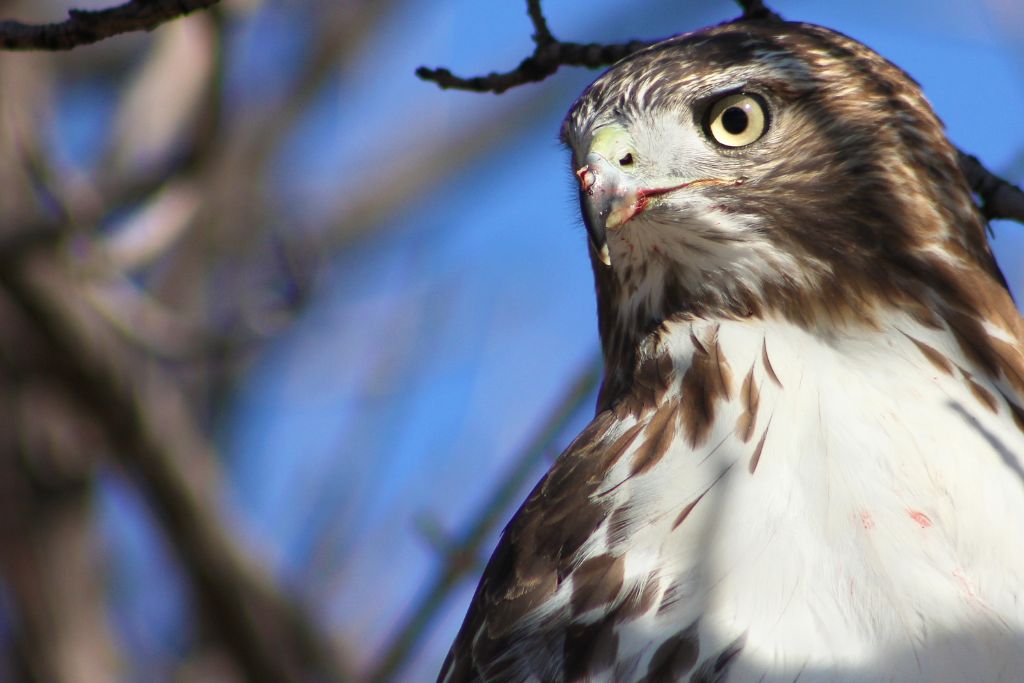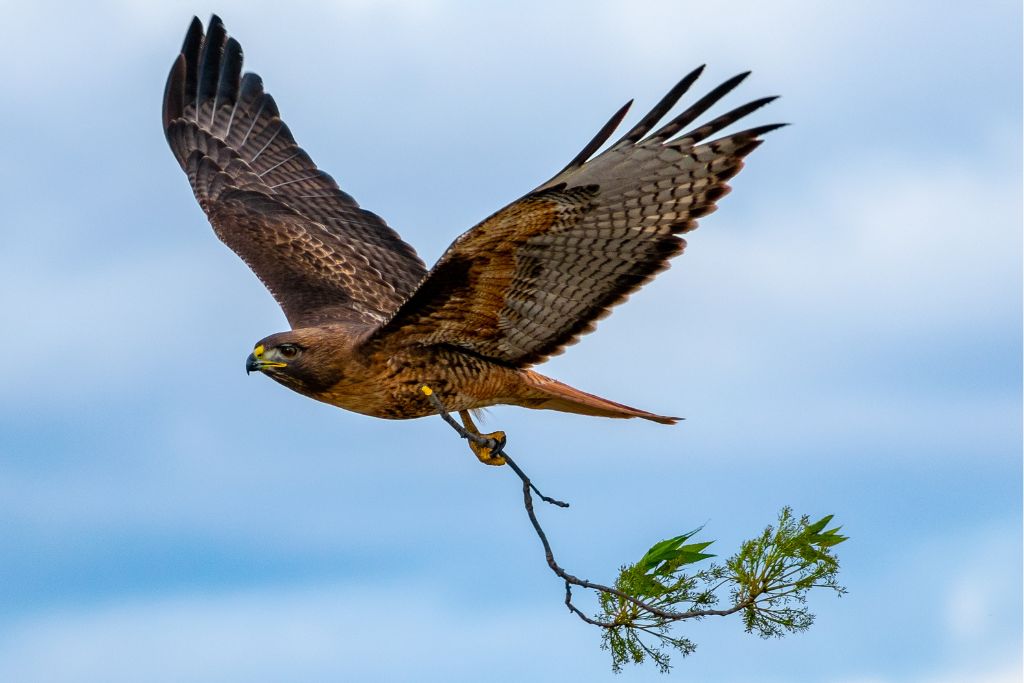Have you ever wondered how much weight a hawk can carry as it soars through the sky? Does the sight of these magnificent birds make you curious about their abilities? What myths and misconceptions surround these powerful predators?
In today’s article, we dive into the fascinating world of hawks, explicitly focusing on their carrying capacity. Many think these birds can lift heavy prey, sometimes even larger than themselves. In reality, that’s a common misconception. Hawks generally carry prey weighing no more than one-third of their body weight.
Ready to debunk more myths and uncover the true capabilities of these aerial hunters? Stick around as we explore the science behind hawks and their prey-carrying prowess. You will want to take advantage of what comes next!
The Majestic Nature of Hawks

These aerial predators have fascinated humans for centuries, often symbolizing strength and freedom. Hawks rule the sky as formidable birds of prey. They hunt smaller animals, like rodents and birds, with keen eyesight and sharp talons.
Now, let’s talk about some myths. A popular misconception suggests that hawks can carry prey much heavier than themselves. In reality, they lift animals weighing up to only one-third of their body weight. This limitation comes from their muscle strength and wing structure.
So, why does this myth persist? Movies and stories often exaggerate the abilities of these birds, leading to skewed perceptions. But science tells a different tale, grounded in biological facts and field observations.
Understanding the true capabilities of hawks enriches our appreciation for these magnificent creatures. It also helps us become more informed observers of the natural world.
7 Factors Determining a Hawk’s Carrying Capacity

Ever wondered what determines how much a hawk can carry? It’s not just about wing strength or talon size. Factors like species, age, health, and even weather conditions play a role. Let’s dive into crucial elements influencing a hawk’s ability to lift and carry prey.
Hawk Species
Not all hawks are the same; they come in various species and sizes. Size differences are significant from the smaller sharp-shinned hawk to the larger red-tailed hawk. These variations in size directly impact their carrying capacity.
For example, a larger hawk generally has a greater ability to carry heavier prey, thanks to its stronger muscles and more enormous wingspan.
Age and Health
Age matters when it comes to a hawk’s carrying capacity. Younger hawks are still developing their muscles and may not be as strong as their older counterparts. Their muscle strength improves as they age, allowing them to carry heavier prey.
But it’s not just about age; overall health plays a crucial role, too. A healthy hawk with well-developed muscles and strong wings will naturally have a higher carrying capacity than one sick or malnourished.
Prey Size
The prey size a hawk can carry usually follows a specific ratio to the hawk’s body weight. Most hawks can lift prey that weighs up to one-third of their body weight. For instance, a red-tailed hawk might carry a rabbit, while a smaller, sharp-skinned hawk would opt for lighter prey, like a sparrow.
Hunting Techniques
Hawks employ various hunting techniques, from soaring high and diving swiftly to stalking prey from a perch. These strategies directly impact the size of the prey they can carry. A hawk that swoops from a great height can use the force of gravity to help lift heavier prey.
On the other hand, a hawk that hunts from a perch might go for smaller, more manageable prey due to the lack of added force from a dive.
Talons and Grip Strength
A hawk’s talons are specialized tools designed for gripping and carrying. They’re sharp, curved, and incredibly strong. Grip strength plays a vital role in determining what a hawk can carry. A firmer grip means the hawk can hold onto heavier prey during flight. It’s not just about lifting the prey; it’s also about holding it back to the nest or eating perch.
Wind Conditions
Wind can be a friend and a foe to a hawk carrying prey. A strong tailwind helps hawks lift heavier animals by providing extra lift. In contrast, headwinds make the job more challenging, forcing the bird to opt for lighter prey. Hawks adapt to these conditions in clever ways. For example, they might change their hunting altitude to find more favorable wind currents.
Environmental Factors
The terrain where a hawk hunts can also affect its carrying capacity. In open fields, hawks can dive at high speeds, using gravity to help lift heavier prey. Forested areas present a different challenge; the dense trees limit speed and maneuverability, often leading hawks to choose smaller, more agile prey.
Each environment comes with its own set of pros and cons, shaping the hawk’s hunting strategy and, by extension, the size of prey it can carry.
How Much Weight Can a Hawk Carry?

So, let’s get to the point: how much weight can a hawk actually carry?
As stated before, most hawks can lift prey weighing up to one-third of their body weight. A red-tailed hawk that weighs around three pounds can carry a one-pound rabbit with relative ease.
But remember, this isn’t a hard and fast rule. Various factors like wind conditions, the hawk’s health, and even its hunting technique can influence this number. A strong tailwind or a particularly healthy hawk can carry something heavier.
It’s also worth noting that hawks only carry their prey for a short distance. They prefer to take it to a nearby perch or nest to eat. This behavior minimizes the energy they need to expend, allowing them to hunt more efficiently.
In summary, while the one-third body weight rule offers an excellent general guideline, the actual carrying capacity of a hawk can vary. It depends on environmental conditions, the hawk’s physical state, and hunting methods. So, the next time you see a hawk in action, you’ll better understand its incredible capabilities.
Final Thoughts
Understanding how a hawk’s body weight relates to the weight of the animals it hunts is really important. This ratio affects the hawk’s ability to carry its prey and influences how it hunts and where it lives.
So, when you spot a hawk soaring in the sky, remember it’s not just flying around without a purpose. It’s thinking, adjusting, and making decisions based on a bunch of factors, including how heavy its potential meals are.
FAQs
Can a Hawk Pick Up a 5 Pound Dog?
No, most hawks can only carry up to one-third of their body weight, usually much less than 5 pounds.
Can a Hawk Pick Up a Cat?
No, the average domestic cat weighs more than most hawks can carry.
How Much Strength Does a Hawk Have?
A hawk’s strength varies by species, but most can carry prey weighing up to one-third of their body weight.
Why is a Hawk So Strong?
Hawks have specialized muscles, sharp talons, and keen eyesight, making them effective predators.
Which is Stronger: the Hawk or the Eagle?
Eagles are generally stronger, with a more remarkable ability to carry heavier prey due to their larger size and stronger muscles.





